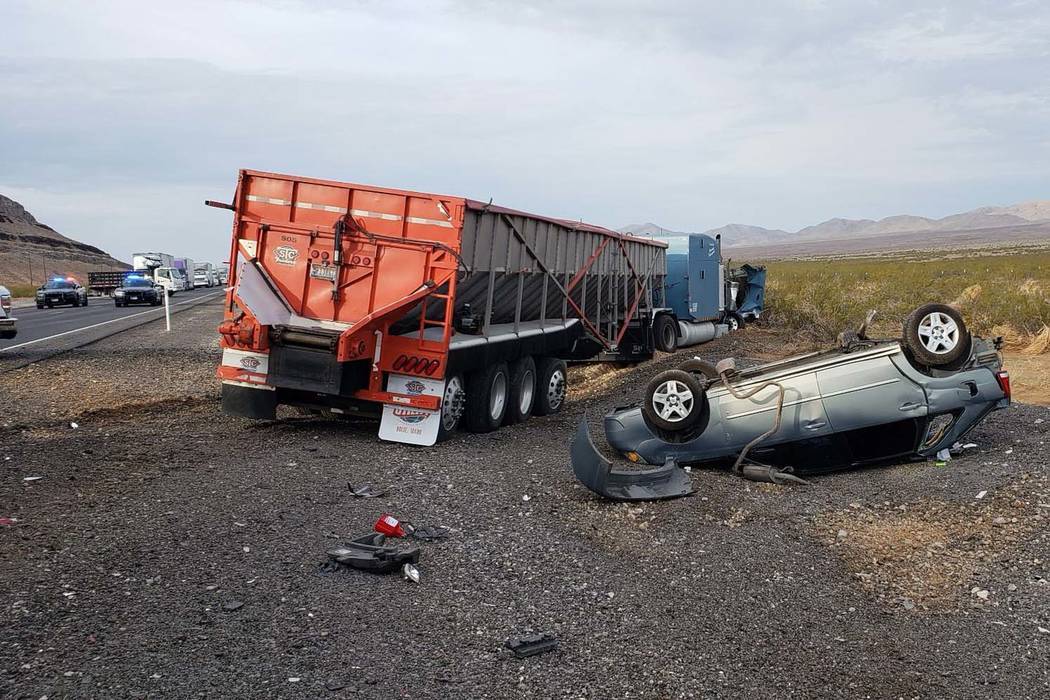
Drowsy driving can be just as dangerous as drunk driving.
Getting plenty of rest before a long trip is a vital step to keep motorists from nodding off behind the wheel and potentially causing a crash.
“Sleep is the only true preventative measure against the risks of drowsy driving,” said Tony Illia, a spokesman for the Nevada Department of Transportation.
The advice sounds like common sense, but the problem is more pervasive than you might think.
Drowsy drivers caused more than 4,121 crashes between 2011 and 2015, with nearly half of those fatigued drivers closing their eyes between 9 p.m. and 6 a.m, according to the National Highway Traffic Safety Administration.
The results are sometimes deadly, like when a dozing truck driver plowed into four vehicles stopped at a construction zone along U.S. Highway 93 roughly 50 miles north of Las Vegas on July 18.
Two men from Idaho were killed in the crash, while two other drivers were treated at a hospital for minor injuries. The semi-trailer driver admitted to investigators that he was asleep at the wheel and woke up seconds before the accident, according to the Nevada Highway Patrol.
Along with getting seven to eight hours of sleep each night, drivers should avoid drinking or taking any medications before hitting the road, Illia said. Coffee and energy drinks might give you a temporary boost in alertness, but motorists usually become even more fatigued after the sugar and caffeine highs wear off.
If the eyelids start getting heavy, drivers should pull over and take a 20-minute nap in a lighted area or a designated rest stop, Illia said.
NDOT also does its part to keep drivers alert — particularly in rural areas — by embedding rumble strips in the pavement. The tool creates an audible vibration through the wheels and into the interior of vehicles driven by sleepy motorists who might be drifting off the road.
Additionally, wrong-way signs equipped with flashing red lights will be installed at a handful of freeway exits, including the new Kyle Canyon Road interchange at U.S. Highway 95 in the northwest valley and also the Starr Avenue interchange at Interstate 15 in the south valley, Illia said.
Replacing those fading plates
A reader from Las Vegas said he’s noticed that some of the older Nevada license plates are fading, sometimes leaving a “dirty brownish color” or exposing bare metal.
The reader wanted to know why he’s seeing so many defective plates, and whether the Department of Motor Vehicles was aware of the problem.
The DMV started fixing this issue in 2016 with a rolling re-issue program to replace faded plates, agency spokesman Kevin Malone said.
That same year, the DMV also opened a new plate manufacturing factory in Carson City and introduced the current “Home Means Nevada” standard plate design.
“The new license plate factory enabled the DMV to bring back embossed license plates and discontinue the older, flat-plate process,” Malone said.
However, they aren’t being replaced immediately because of a backlog of nearly 720,000 sets of plates that were up to 15 years old, Malone said.
The DMV gave itself about three years to pare down that backlog.
“We are now in the third year of replacing older plates,” Malone said.
“We expect to have all of the faded plates replaced by this time next year.”